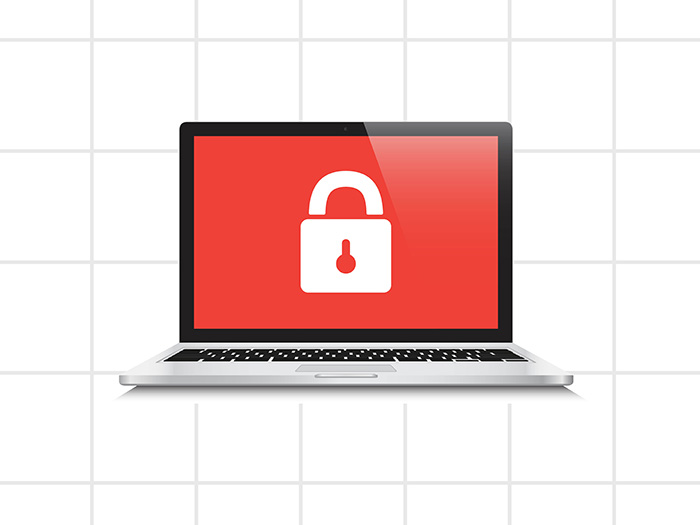5 Critical COVID-19 Risks to the Public Sector

Taxpayers demand a lot from the public sector, especially in times of crisis.
The impact of COVID-19 has been no different, except this time, public pressure is even greater. To make matters worse, a pandemic does not offer the geographic limitations of a hurricane or the flooding of a coastal town. No U.S. municipality has been spared from coronavirus.
As our editor-in-chief, Dan Reynolds, wrote in 2018, “The public sector faces every risk the private sector does and then some.” Now more than ever, these words ring true.
Here are the 5 greatest risks to the public sector, brought on by COVID-19.
1) Budget Restrictions
Responding to a health crisis results in a huge increase in expenses and a large reduction in revenue from industries that are shutting down. A large risk exposure for the public sector is its reliance on other industries.
“I think in the long-term there’s all this uncertainty about the sources of revenue that are needed by these public entities,” said Jose Peralta, public sector director, Aon.
“If you’re talking about a tourist-heavy municipality, when are those tourists going to come back to your city? What does that mean in terms of services that you have to cut? There’s also quite a big disparity because of the unevenness of recovery from the last recession.”
People tend to think of public services as resources that just show up when we need them and have unlimited funding, but in reality governments face tight budgets.
“Governmental entities are under budget restraints; most operating without the assistance of federal stimulus money. They struggle to obtain enough personal protective equipment and supplies,” said Dorothy Gjerdrum, managing director of Gallagher’s Public Entity practice.
Peralta added that times of crisis bring a better understanding to the public of just how difficult it can be for government services to meet demands and expectations with the funds they have access to.
“I think there’s a better understanding now of all the pressure that public entities are under,” he said. “They have higher demands for efficiency which makes them even more fragile, especially when they’re trying to react in the way that we expect them to react to events like this.”
2) Strained Resources: Human and Otherwise
On top of strained budgets, the public sector is also struggling to maintain an adequate supply of resources — such as personal protective equipment — to respond to the crisis.
Protecting employees and first responders from illness or harm is the number one priority for all sectors. This requires the proper PPE for those who don’t have the luxury of working from home.
In addition to that, staffing is also running thin.
“Many law enforcement officers are driving solo instead of in pairs; others are trying to minimize risk by wearing face masks. This is an ongoing challenge,” Gjerdrum said.
And no matter how scarce human or material resources become, state and municipality provided services cannot take the day off, which can take a physical and emotional toll on those tasked with delivering them.
“From garbage collection to the operation of prisons and detention facilities, state and local governments must continue to provide essential services, keep employees safe, and serve the public,” Gjerdrum said.
“I think there’s a big awakening around all of the ways that public entities factor into our lives and what they mean,” said Peralta.
“You have a K-12 school system, you think of it as a provider of education, but they’re also providing day-care, food and counseling.”
3) Cyber Exposures
Governments are at a 33% higher risk of cyber-attacks than organizations without public-facing applications. A recent report from Corvus shined a light on why ransomware attacks are gaining traction in the public sector.
They found that a lack of common security measures, such as the use of email security software, and often under-staffed and under-funded in-house IT teams could be part of the reason why governments are common targets for cyber attacks.
Times of crisis make these municipalities even more vulnerable. “Cyber-attacks on public sector operations are on the rise and with an increased number of employees working from home, that is a major concern,” Gjerdrum said.
Back in March, when social-distancing first went into place, the U.S. Department of Health and Human Services suffered a cyber attack that attempted to slow its coronavirus response. As a result, lives hung in jeopardy.
If employees don’t know how to take the proper precautions to protect their data from home, the data of entire organizations — and in this case entire cities and states — could be at risk.
According to the National Law Review, the best way for public entities to offset this risk is to conduct a Cybersecurity Threat Risk Assessment, have an incident response plan ready to go and test their own security.
4) Natural Catastrophes
As previously stated, unlike some disasters, the coronavirus doesn’t discriminate by geography. Municipalities fighting the virus have an even greater exposure should they be hit with a natural disaster.
“It’s being described like a natural disaster that’s happening everywhere all at once,” Peralta said of COVID-19.
And when natural disasters do happen, it’s the public entities — first responders, police officers, and EMTs — that are expected to be that crucial backstop.
“We’re about to enter into hurricane season and the spring flooding season in the midwest and we’re probably going to be hit by other natural disasters and other shocks to the system…We’re already reacting to this unprecedented disaster and it’s 100% guaranteed that somewhere in the United States public entities will need to react to a second disaster.”
With more resources being allocated in the fight for COVID-19 relief, there will be less supplies to allocate to natural catastrophe victims as well as smaller response teams.
5) Uncertainty
In any sector, uncertainty is just another word for ‘uninsurable risks’, with risk management as the strategy for planning for the future.
“In some ways, we have a better view of what we need to do to prevent the health crisis, but there’s this growing uncertainty and pressure on long-term ramifications and financial impact of this disaster,” said Peralta.
These ramifications could come in the form of furloughs and layoffs, reduction in services, increased taxes and higher insurance costs.
“Knowing when and how to re-open is a pressing concern,” Gjerdrum added.
“Businesses and people are anxious to put this behind us; that will make it tempting to open operations as soon as possible. Experts predict we will see new waves of infection if we open too soon. Limited access to testing and contact tracing limits our ability to know when it truly is safe to re-open, so that is a huge and present risk.”
Perhaps one of the biggest uncertainties and largest obstacles facing reopening is the social-distancing guidelines that will likely remain in place.
“There are discussions around maintaining social distance guidelines when classes resume. Many of the typical classrooms will be at half the capacity they were prior to this based on guidelines,” said Carleen Patterson, first vice president, practice leader, Public Entity, Alliant.
In spite of uncertainty and hardship, responding to a crisis will only make the sector more equipped to handle this type of disaster in the future. However, with likely little to no time to financially recover before a possible second wave, adequate preparedness is unlikely.
“Many of the uncertainties and risks that we face are uninsurable,” Gjerdrum said.
“We hope that lessons learned from this event will result in better preparation and practices that can be applied to a disaster of any type. Early, continual and consistent communication will be paramount. Insurance costs will certainly rise; that will result in lower limits and higher costs. That may generate more creative risk financing solutions and risk prevention tools and resources.”
“I think one really important takeaway is that this is a huge unprecedented disaster and people are completely unsure of how it’s going to affect the balance sheets of public entities,” added Peralta.
“But everyone is feeling the pain right now.” &












